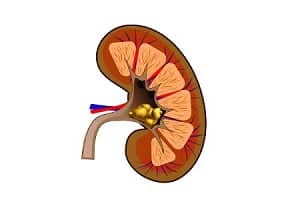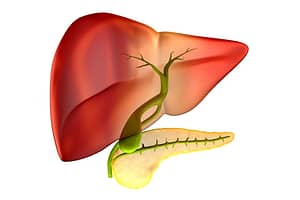
Cervical cancer
Earlier, cervical cancer was one of the main causesof death in women in the United States. But in past 30 years, total number of cases of cervical cancer and the number of deaths from cervical cancer have reduced considerably with improvement in medical know-how. Awareness in women about Pap test is the main reason for this achievement.
It is observed that cervical cancer is found more in middle-aged women, that is, women aged 35-44. Cervical cancer is diagnosed rarely in younger women below age 22. Some women do not understand the prominent symptoms of pre-cervical cancer and, therefore, the risk of developing cervical cancer increases with age. According to a study, more than 20% of cervical cancer cases are observed in women above age 60.
Cervical cancer and its statistics:
In 2018, the American Cancer Society estimated total cases of cervical cancer in the United States for 2018 are:
- Around 13,250 new cases of invasive cervical cancer were diagnosed
- Around 4,000 women were found to be at the last stage or might die from cervical cancer.
- Pre-cervical cancers were diagnosed often more than invasive cervical cancer.
It was also estimated that in developing countries, cervical cancer accounts for about 80% of both prevalence and deaths. In 2012, the WHO revealed that the cervical cancer incidence worldwide was about 7.5%, mortality was 7.5%, and 5-year cervical cancer prevalence was about 9%.
Read more: Can you die from cervical cancer?
Read more: HPV vaccination for prevention of cervical cancer
Cervical cancer prevalence
Stage dependent survival rates for cervical cancer: During early or initial stage, the 5-year survival rate for women with invasive cervical cancer is about 90% but only about 50% of the women can be diagnosed during this time. As cervical cancer advances to further stages, the surrounding tissues or organs and/or the regional lymph nodes get affected. The survival rate at stage 3 is estimated to be about 55%. If cervical cancer has spread to distant parts of the body, then the 5-year survival rate is expected to be about 15%.
Cervical cancer statistics by age: Data from the National Program of Cancer Registries and the Surveillance, Epidemiology, and End Results Program revealed that cervical cancer is mostly prevalent in women aged 35 years. It was estimated that 75% of the cervical cancer cases were detected in women aged 30-40, 20% of the women diagnosed were in the 20-28 age group, and only 1-2% of affected women were younger than 20 years. It also revealed that about 20% of the cases of cervical cancer were in women older than 65 years.
Five-year survival rate for cervical cancer: The 5-year survival rate is an estimate that tells what percentage of women would survive for at least 5 years after the cancer is diagnosed. It was estimated that the 5-year survival rate in all patients of cancer of cervix was about 65%. The 5-year survival rate for cervical cancer is about 70% in white women and about 56% in black women.
Cervical cancer facts provide evidence that Hispanic women (Spanish-speaking countries women)in the U.S. have higher chances to suffer with cervical cancer, followed by African-Americans, Asians and Pacific Islanders, and then whites. The lowest risk of suffering with cervical cancer in the U.S. is found among American Indians and Alaskan natives.
Cervical cancer facts and statistics revealed that cervical cancer death rate in black women (over the age of 20) was about 12 deaths per 100,000 individuals in a year, whereas 5 deaths per 100,000 white women were observed. There is no exact explanation why cervical cancer prevalence is higher in older and black women. The reasons can vary such as not following the cervical cancer guidelines for screening, or no follow-up examinationwas conducted after the screening test results were abnormal, treatment given was not proficient, and lack of understanding amongst the patients about the disease.
Cervical cancer statistics worldwide:
The cervical cancer survival rate has increased from about 45% to 64% in the last 40 years in the U.K. It was studied that although cervical cancer incidence rates have decreased (overall) in some broad age groups in females in the UK, they have also increased in some cases. The increase is observed for age group 20-24 by about 90% and by 45% for age 25-33. The incidence rate for cervical cancer has lowered to about 20% for age-group 35-49, 35% down for age 50-60, 50% down for age 60-70, 35% down for women above 75.
Therefore, the highest rate for cervical cancer in the UK is found in the 23-30 age group.
About 930 women in Australia were diagnosed with cervical cancer in 2017-18. In 2013, the cervical cancer incidence rate was about 7 new cases per 100,000 women, whereas in 2017 the incidence rate increased up to 9 cases per 100,000. In Australia, the incidence rate for cervical cancer is found to be highest for the 35–39 age group. After the introduction of national screening program in 1990s, the incidence rate of cervical cancer in Australia has notably reduced.
Incidence of cervical cancer in sub-Saharan Africa was found to be 26% with 23% mortality, and the 5-year prevalence for cervical cancer was 27.6%. In Ethiopia, the incidence of cervical cancer was estimated to be about 18%, mortality 17% and the 5-year cervical cancer prevalence was expected to be about 18%.






